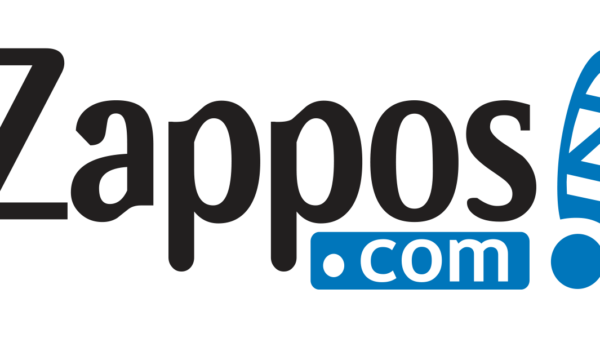Refresher on the definition for organisational culture and the business benefits
When reading to assess the culture you have right now, it will give you a sense of where your organisation is. This will get a sense of where to prioritise actions to get closer to your envisaged future state. So let’s get to it.
1-2-3 of mapping your organisation’s future culture
How to create a cultural ‘blueprint’ of where you want the organisation’s culture to head? Usually this work is needed when senior stakeholders from an organisation have a sense that something is out of alignment.
Maybe your recently launched ‘values and behaviours’ work isn’t making a practical difference to the way people behave. Maybe the organisation’s external operating environment has changed at a really fast pace, but the organisation’s behaviour hasn’t caught up yet. Whatever the reason, there’s a need for cultural change that’s been identified.
So what are the steps to map out the future culture that’s needed?
- Consider the organisation’s context and how it can get the most from it, particularly if that context is changing – existential questions need to be asked of the organisation like ‘what is our purpose?’, ‘what are our goals?’ and ‘what would people be thinking and doing if they were aligned with our purpose and goals?’
- You’ll need views from different parts of the organisation here. Yes, the exec will have a clear strategic view (or they should do). But other people in the organisation will have views too. An important point on this – it’s actually quite hard to get people to engage with the question about future culture BEFORE they’ve talked about how things are right now. So, my advice on this is to let them because that will give you important info that can lead to a nicely rounded picture of what’s going well and what needs to change and will feed into your future culture blueprint.
- With the info you have, you then need to create your future blueprint. This should be in the form of desired beliefs, mindsets and behaviours that define the culture you’re looking to move towards. The tighter you can make these statements (and the more measurable), the better. But the critical question here is ‘will this aspect of culture align with our strategy and help us better meet our objectives?’ If the answer is yes, then keep it in. If the answer is no, leave it out, or revise it.
- This draft culture blueprint will ideally then need to be reviewed and signed off by your key sponsors – the Exec, and the culture project team, before you look to get a snapshot of where you are right now.
How can you measure your culture right now vs your desired ‘future state’ – quantitative and qualitative approaches
By now, you’ll have a clear, well-defined and agreed upon picture of the future culture that will drive your organisation’s strategy. Now you need to find out how far away you are from it. So here’s the big question that faces culture change project teams – HOW?!?
You have a number of options. There are some long established cultural frameworks out there which can give you some sense of how far away you are from where you want to be. In a completely non-exhaustive way, and also with the disclaimer that I’ve never used any of these (I’ll explain why in a minute), although I know people who have used them, these alternatives include:
- The organisational culture assessment instrument (ocai-online.com)
- The organisation culture survey (denisonconsulting.com)
- The organisation culture inventory (humansynergistics.com)
There are many many more but the above are all well-researched and fully validated models. Each is based on different conceptualisations of culture. They’re all about getting the balance between X aspect of culture and its Y alternative.
For example, whether the culture has an internal people focus or an external customer focus. Whether it’s seen as being more adaptable to the market or more consistent, regardless of market forces, that kind of thing.
Thing is, with models like this is that they are what they are. And the likelihood of them capturing perfectly the kind of culture that you’ve spent time and effort defining in your work up to this point is pretty slim. So if you go down this route, you’ll more than likely end up with a precise measurement of your organisation’s culture using a model that doesn’t precisely define what you want your future culture to look like. So it’s a compromise solution.
The ’in between’ solution is to create a hybrid version of a validated culture tool but change it up so that it better matches your future culture blueprint. Some consultancies will likely allow this, although I’m not sure about any of the ones I’ve mentioned. I think their tools are pretty much set in stone.
The third way is the bespoke approach. This involves building your assessment from scratch. So, defining each aspect of your future culture state in terms of observables that people in the organisation will be able to accurately describe.
Perhaps using rating scale questions like ‘I have the opportunity to influence decisions in my work team’, or ‘I feel aligned with the vision and mission of this organisation’, or ‘I would say that I am empowered to do my job in the way that I think is best’. That kind of thing.
Alongside these quantitative questions, also using qualitative questions that can dig a little deeper, like ‘What one thing do you think needs to change in this organisation to make it a better place to work’. Aaaand, ideally, some kind of objective metrics that relate to each aspect of culture that the organisation already collects, such as employee retention/turnover data, workforce diversity data, the organisation’s structure, etc.
Word to the wise, don’t ask a culture survey question if you don’t know what you’re going to do with the answer. Oh, and do make sure that you construct your questions in a good practice way, no double barrels (that’s asking two questions in one) and use clear, concise, concrete and unambiguous statements based in the most part on things that people can observe.
And if you ask questions about people’s competence (for example a rating scale question like ‘I have the skills I need to do my job effectively’), or you ask about their teammates (for example ‘colleagues in my team are very supportive of each other’), people will typically answer super-positively, so try and avoid too much of this as the data may not be very helpful.
Clearly, these are all examples of the kinds of things you can use to assess your organisation’s current culture. But in my view and in my experience, these methods of measurement need to map onto the future culture blueprint you have developed as precisely as possible.
It’s worth spending time and getting help to ensure that the assessment approach you end up with is going to give you a true picture of you now vs desired future you. So that you’ll know where to prioritise action.
Bringing it all together – the art and science of culture assessment
Once you have your measurement approach nailed, my advice is to mix it up. Use different ways of collecting information on the ‘now’ of your organisation’s culture. Get the most accurate picture you can.
Gather the types of survey questions that I’ve mentioned (quant rating scale and qual open ended question types). As well as objective measures of performance or organisational behaviour or structure. You can also use focus groups or conversation groups and/or 121 interviews with a sample of employees.
These approaches will help you get under the surface and find out what’s really going on in the organisation in the words of its people. The quotes you can get from these approaches and the additional data can be invaluable in helping to pinpoint problem areas and prioritise actions for change.
You will have collected a lot of info – this is where the art and science of culture work comes in. You need to make sense of it all. Then connect and engage to help you identify next steps. My advice is to present your ‘current picture’ vs ‘future state’, cultural area by cultural area. Use some quant graphs that show the gaps. Use some quality info that gives the depth and helps people connect on a human level with what they’re seeing.
There’s no rulebook out there for this. It will need some decisions from you on how much or how little to share. My view is less is more – provide an exec summary, then some more details (not too much). Form an appendix with detailed info, quotes, etc.
When you present it all back to the project and executive teams, make sure to think about the type of impact you’re looking for. Culture assessment results are effectively feedback to the top team on how they’re running the organisation. Bear in mind that there will be nervous emotion in the room. People will question, challenge and even reject some of the findings if they’re not ready to hear that feedback.
Do try and read the room. Present your findings in a way that’s manageable (not overwhelming). Balanced (not confrontational) and constructive (not blaming). That way, you’ll set up the next stage – prioritising actions and developing a culture change road map – in the most positive way possible.
Engaging the organisation on the journey to make change happen and make it stick
I’ll now briefly touch on next steps in terms of engaging the organisation in the next stage of the journey. There’s too much to cover to do any justice. Engaging the company is what will be needed if you’re going to shift and embed lasting change.
So lots more to talk through. As ever, I’m happy for you to connect with paul.brewerton@strengthscope.com.
Must read How to map your future culture and how to work out when you need to. This will give you a complete view of mapping your future company culture.












